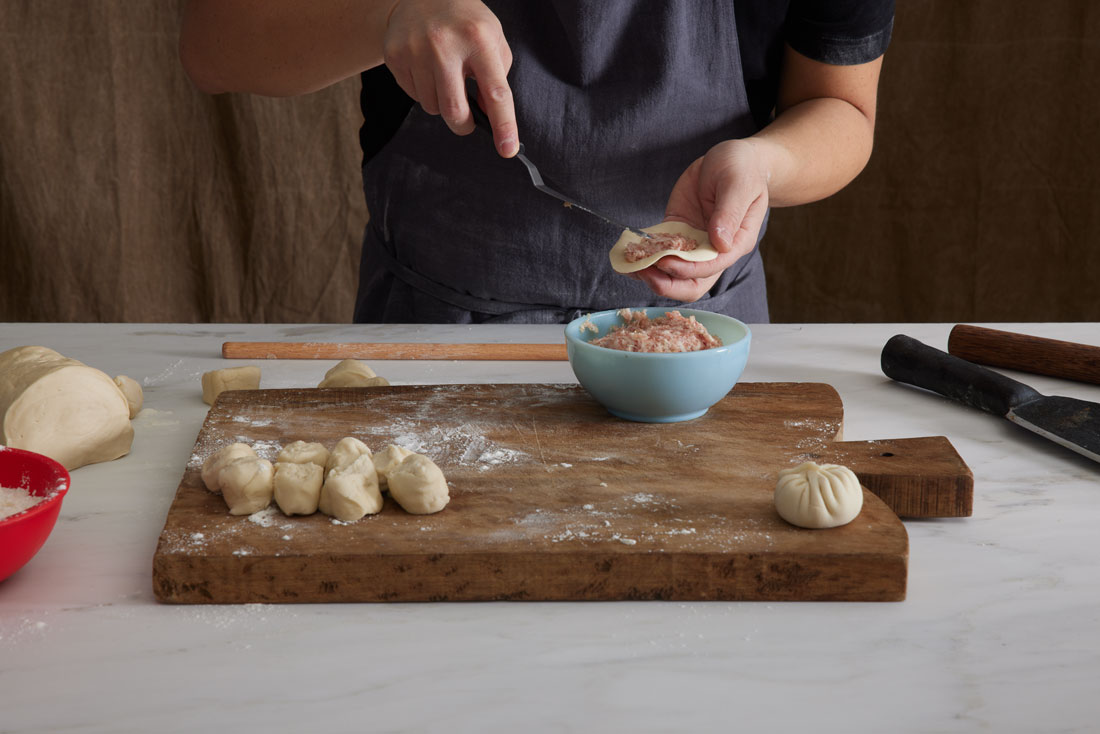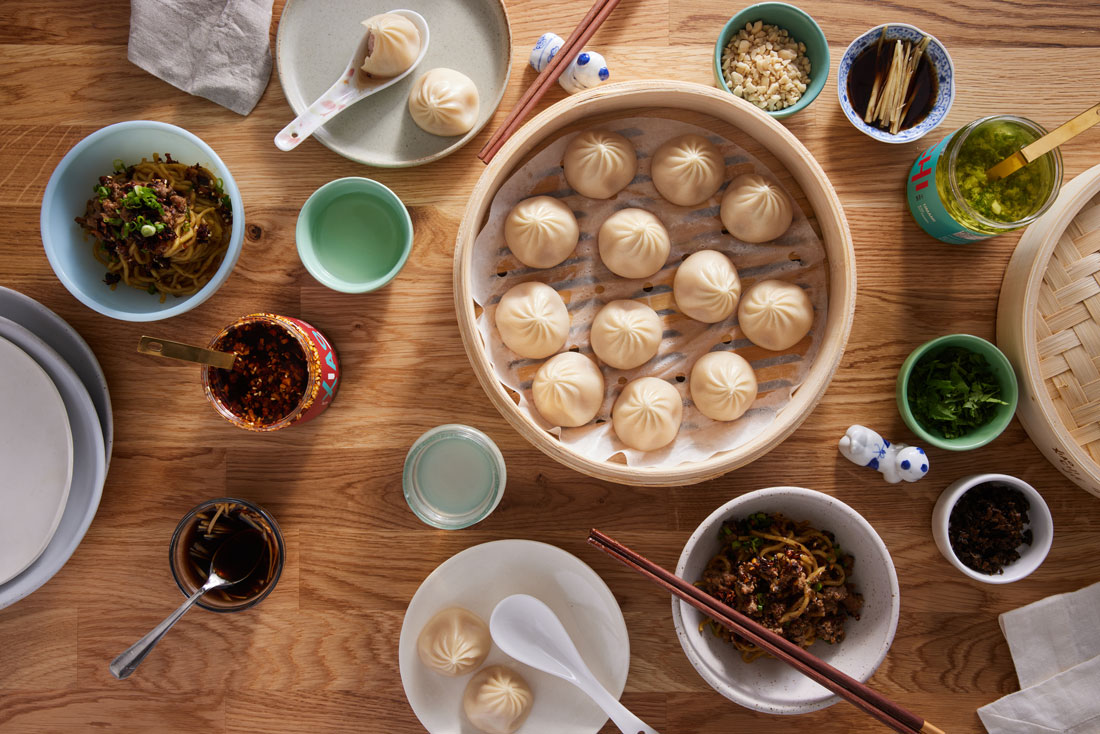Jen Liao and Caleb Wang are second-generation Chinese Americans, and the husband and wife team first opened Xiao Chi Jie (XCJ) as a single restaurant serving Chinese street food in Seattle’s Bellevue neighborhood in 2018. The name Xiao Chi Jie translates to “street food avenue” in English.
The pair say that opening XCJ helped them connect with their family history and cultivate pride in their Chinese identity, though they’ll readily admit that at least part of their motivation behind starting a Chinese restaurant was so they could eat their favorite foods all the time.

In March 2020, faced with a looming pandemic, XCJ was forced to close indoor dining and pivot. Wang quit his full-time job in finance to focus all of his time and energy on helping XCJ survive. However, xiaolongbao soup dumplings are not well-suited for takeout. There’s a reason they’re served fresh in a bamboo steamer at the restaurant—nobody wants cold and congealed dumplings.
“We knew the best way to stay connected to our customers and keep our staff employed was to start freezing our dumplings,” Liao says. They began by making just 20 bags of dumplings a day for local delivery and sold out every day. Pretty soon they had people reaching out online clamoring for nationwide shipping.
Liao and Wang scoured Asian supermarkets and American grocery store aisles and found that most dumplings were mass manufactured, pre-cooked (which negatively impacts dough integrity and the overall flavor profile) and microwaveable, because steaming was considered “too foreign” or too difficult for the average consumer. This was their lightbulb moment: they knew they could make a better product and saw there was a demand for high-quality, authentic Chinese food for a direct-to-consumer market.
“There’s historically been a lack of honestly represented Chinese food,” Liao says. “When the average person in the U.S. thinks about Chinese food, it tends to be Americanized dishes created to fit the Western palate. Americanized dishes are delicious, but more and more folks have moved to appreciate honest representations across many different cuisines, and are seeking these experiences out.”

The R&D process for creating the perfect frozen dumpling was challenging and meticulous. They tested and retested every element of the recipe countless times to determine the best dough-to-filling ratio, type of ground meat, soup content, freezing technique and optimizing the elasticity of the dough if the consumer oversteams their dumplings at home.
XCJ’s branding is cheeky and modern, with a fun social media presence and earnest customer service. If there were any shipping issues and dumplings arrived in less than perfect condition, a new batch would be on the way immediately. By the end of 2020, they’d sent 800,000 soup dumplings to homes nationwide in all 50 states. By the end of 2021, that number reached 4 million, with a staff of 15 making hundreds of bags of dumplings each morning. The recipe has gone through many tweaks along the way to create the best at-home experience.
“Even the dough itself has gone through countless iterations to make sure it’s thin enough, holds up during both freezing as well as dry ice shipping, and mostly does not leak at home,” Liao says. “Despite scaling up, we have made it an imperative point to not change any of the processes that made the original version great—things like fresh dough and filling every morning and keeping the batch size small so that there is a good mix of soup in each dumpling has been important.”
Business tripled from Q3 to Q4 in 2021, after moving production to a larger facility, and Wang says they are looking to triple again in 2022. To help control product quality and manage frozen logistics, they have several distribution hubs across the country, but each dumpling is made by hand in Seattle. Xiao Chi Jie still operates one small counter service fast casual restaurant in a mini food court with communal seating, but their direct-to-consumer business brings in 10 times the revenue.

“We want to be the go-to modern Chinese food brand,” he says. “Broadly speaking, if you look back a few years, there was no best-in-class Chinese food for this particular niche in the CPG world. And now you’re really seeing that expand, driven by customer demand for authentic and honestly represented food. We want to meet that demand and bring you exciting flavors for some foods that you may have heard of, like soup dumplings, but also dishes that you’ve never heard of, like lesser-known kinds of noodles or Chinese BBQ.”
This year, they’re planning to expand their product portfolio, including vegetarian and gluten-free options to be as inclusive as possible. The next product they’re planning to launch is frozen dan dan mian, a traditional Szechuan noodle dish made with a numbing mala spice. Many versions found in the U.S. are soy sauce-based or a little sweeter to cater to the American palate, but XCJ is reviving the traditional flavor profile.
“A main component of broadening exposure for all folks regardless of familiarity or background is education and awareness, so we’ll be working hard on that this year,” Liao says. “We always welcome questions from all of our customers and read all of our direct messages to understand where we may have gaps. As third culture kids, we’re in a fortunate position to act as a bridge and resource between cultures and we’re excited to explore how Asian American food developed by Asians evolves.”
Photos courtesy of XCJ




